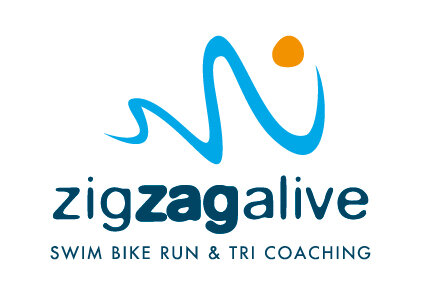At Brighton Tri Club we’ve just finished a four week programme of Wednesday night bike and run ‘brick’ sessions and I thought I’d share here the tips I gave over the weeks for transition practice and general race preparation.
The four week programme has been led by one of our Cycle Coaching Leads, Mark Lewis – founder of the excellent Brighton Bike Fit. It's been based on a progressive series of mini-bricks: after a warm up on the turbos, strategically placed at the top of a short ramp by the running track, each mini-brick involved a hard effort on the bike followed by just two or three laps running on the track, then back on the turbos for a recovery spin before the next mini-brick. It’s been great fun and hopefully will prove to be great early season race preparation.
In the first session, while everyone was pedalling away, I was asked to provide a top tip for dealing with the brick-like legs as you start the run. Each week I added another tip for transitions and general race preparation, building up to the following ZigZag Race Head collection:
try not to cry!: it’ll upset your supporters. More seriously, be prepared for your legs to feel all over the place as you go from the bike to the run. Going from a hard effort in the swim to running through transition will also be disorientating. But there are lots of things you can do to prepare yourself, not least the sessions we’ve been doing. Other tips include…
rhythm: focus on getting into your own rhythm, not those around you. In our first brick sessions we had to tell everyone not to go chasing off after the fastest runner, who was pushing a hard pace to keep ahead of all the others! In a race, especially coming out of transition 2, it’s all too easy to get swept along by the buzz, pushing way to hard and then struggling through the rest of the run. Focus on getting your breathing under control, settle into your own rhythm and you will come through strongly
set up: this is all about meticulously setting out everything you need and walking yourself through each step, so come the moment in the race you operate by instinct, without loosing a second to think about anything, making for super fast transitions. We asked our group on the Wednesdays to lay out their kit as they would do on race day itself: racing shoes laid out on a foot towel, helmet in position with the race belt and glasses all in the right order to be put on. Another aspect of set up is calmly and methodically to look and walk through each entry and exit point, noting any easily visible guides to help you locate your bike amongst the hundreds of others
shift: here we enter the world of Sports Psychology to attune yourself to where stimuli are coming from and then affect a shift in focus. So for example, whilst I’m setting everything up in transition before the big race, I might find myself feeling overwhelmed with all the noise and commotion, the infectious nervousness of other competitors and the sheer scale of everything around me. In such moments I want to be able to shift my focus from all these wide, external pressures to narrow it down to things more in my control, such as the layout of my kit or remind myself how well I’ve been swimming recently. Or coming out of the second transition I might feel totally conscious of the pain in my quads or the person who has just zipped past. I want to shift my focus, maybe to get the breathing under control, arms swinging in synch and into my rhythm, maybe focus on a slower athlete up ahead or spur myself on by thinking of overall what a great race I’m having. Practise making these shifts as you train - external to internal, wide to narrow - and it'll happen more naturally in race conditions
self-talking: no, not the first sign of madness. A powerful way to make these shifts in focus is to prepare a set of scripts to talk yourself through. On our Level 3 course, Sports Psychologist Noe Orozco encouraged us to get our athletes to draw up a grid for each phase of the race, starting with the warm up, swim, transition 1 and so on and have scripts ready for each focused on technique, race tactics and motivation. So, for example, for the swim I might think about what I’ll be saying to myself in those first frenetic 200-400m of an open water swim: “get the breathing under control, bubble-bubble-breathe…” (technique), “find some fast feet to draft behind and hold it steady to the next buoy…” (tactics) “you can do this … “(motivation)
Getting in the rhythm
So, to all those taking part in an early season race this weekend, such as the Steyning Tri run by our friends at Raw Energy Pursuits, hope the above helps. And above all – enjoy!

